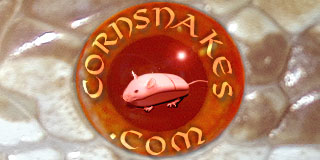Tula_Montage
It's Jager time!
I have noticed a few people asking about thermostats recently, And have seen people being advised to use them as their temperatures are not being regulated.
Heres hard evidence that a mat without a thermostat and no insulation WILL over heat and fry your corn.
I plugged a 12watt mat into the mains, put it underneath a 10G i don't use and measured the temps at regular intervals. The digital thermometer was placed at the centre of the mat underneath aspen substrate.
Heres the shortlisted results (similar to the experiment recently done with hot rocks)
10 mins: 78
20 mins: 84
30 mins: 93
40 mins: 97
50 mins: 102
and after only an hour the temps read 110 degrees!!
So please if you are not using a thermostat to regulate the temperature to between 80 - 86 on the warm side, i suggest investing in one...
A good thermostat will regulate a whole rack of tubs, not just one!! Common misconception is to buy a new thermostat every time you get a new tank and heat mat. This is NOT needed if the same temperature gradient is needed for both tanks. However pet stores will always tell you otherwsie
Just a heads up and I hope this helps some who have thermostat and heat regulation temps
Heres hard evidence that a mat without a thermostat and no insulation WILL over heat and fry your corn.
I plugged a 12watt mat into the mains, put it underneath a 10G i don't use and measured the temps at regular intervals. The digital thermometer was placed at the centre of the mat underneath aspen substrate.
Heres the shortlisted results (similar to the experiment recently done with hot rocks)
10 mins: 78
20 mins: 84
30 mins: 93
40 mins: 97
50 mins: 102
and after only an hour the temps read 110 degrees!!
So please if you are not using a thermostat to regulate the temperature to between 80 - 86 on the warm side, i suggest investing in one...
A good thermostat will regulate a whole rack of tubs, not just one!! Common misconception is to buy a new thermostat every time you get a new tank and heat mat. This is NOT needed if the same temperature gradient is needed for both tanks. However pet stores will always tell you otherwsie
Just a heads up and I hope this helps some who have thermostat and heat regulation temps
